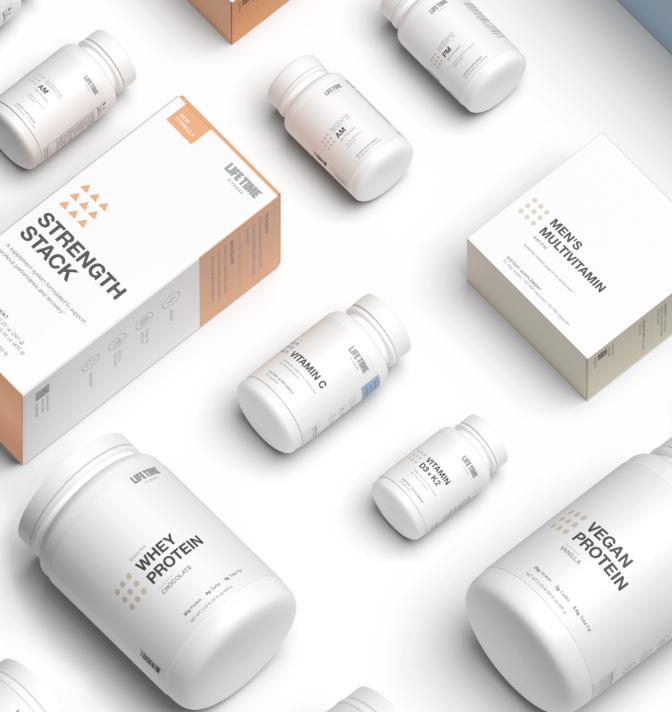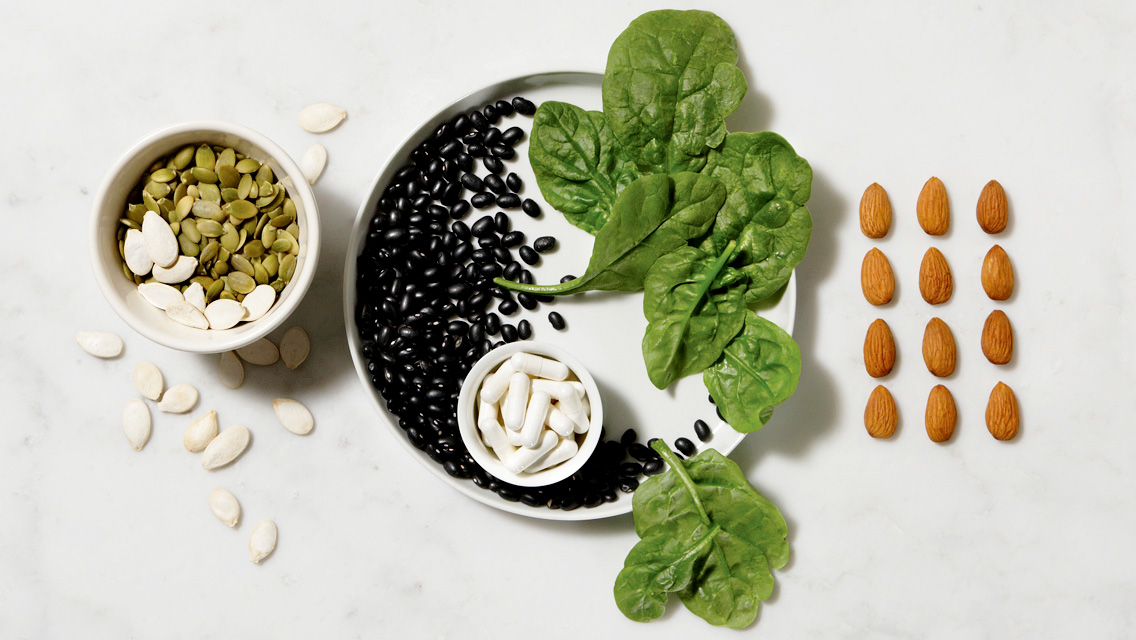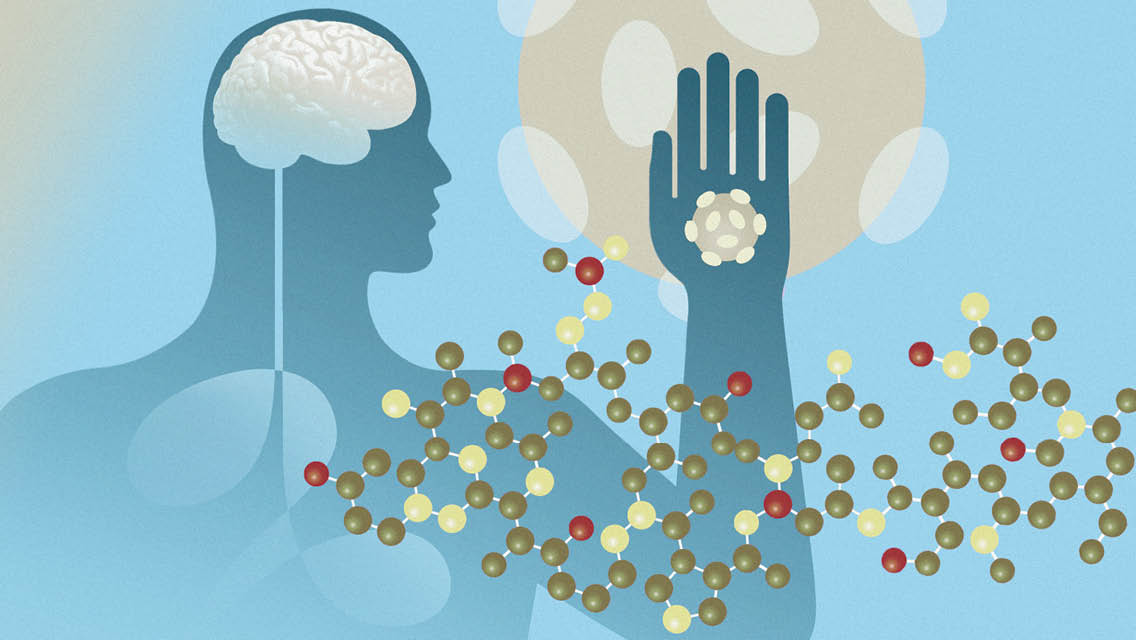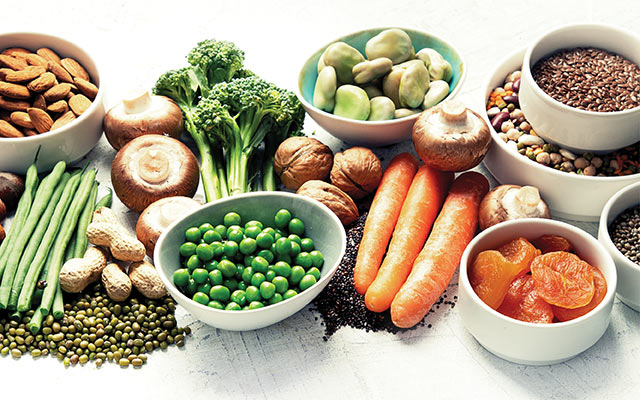Explore the essential minerals:
1) Calcium ⋅ 2) Magnesium ⋅ 3) Potassium ⋅ 4) Selenium ⋅ 5) Zinc
Most of us know a thing or two about vitamins. We understand that vitamin C in citrus supports immunity and that vitamin D is the sunshine vitamin. But ask someone about minerals, the other half of the dynamic nutrient duo, and you’re apt to hear . . . crickets.
“People just don’t know what to do with minerals, which is why they often get ignored,” says Carolyn Dean, MD, ND, author of The Magnesium Miracle. “Yet in most metabolic processes, our physical well-being depends more on minerals than it does on calories, vitamins, or the precise proportions of starch, protein, or carbohydrates we consume.”
Perhaps it’s because we don’t imagine rocks being a critical part of our diets. Yet rocks are the origin of minerals that become part of our bodies.
“We don’t eat rocks, obviously, but as rocks break down, they release minerals into the soil. Crops then take up minerals through their roots and incorporate them into the parts of plants we eat. And when we eat plants — and plant-eating animals — those same rock-derived minerals enter our bodies,” explains biologist Anne Biklé, MLA, coauthor of What Your Food Ate: How to Heal Our Land and Reclaim Our Health.
Vitamins can be destroyed by heat, sunlight, and water, but minerals can withstand those forces, says Oklahoma State University nutrition professor Janice Hermann, PhD, RD, LD. “In fact, if a food is burned, the remaining ash contains the minerals that were in the food.”
Our bodies contain dozens of nonflammable minerals, 16 of which are known to be essential to life (see “The 16 Essential Minerals” below). These are classified by volume as “major” and “trace.”
The body needs major minerals, such as calcium, in daily amounts of 100 mg or more. It requires trace minerals, like zinc, in daily allotments of less than 100 mg.
“But they are all equally vital for life,” adds Hermann. “The fact that you need more of one mineral than another doesn’t mean it is more important.”
Major minerals give the body form. Bones are sculpted with calcium and magnesium, explains David Montgomery, PhD, a University of Washington professor and coauthor of What Your Food Ate.
Still, the body wouldn’t function without trace minerals, which support nerve signaling and energy metabolism. “It’s one thing to build the body, but the body’s got to work,” explains Biklé.
The following offers a closer look at a few of the essential minerals that keep your mind and body humming.
1) Calcium
The most plentiful mineral in the body, calcium accounts for 1.5 to 2 percent of our overall weight. Our bones and teeth store 99 percent of the body’s calcium. The other 1 percent is dispersed throughout the body, where it has a hand in muscle contraction, blood clotting, hormone release, and nerve transmission.
Because calcium is key to the body’s structure and its function, demand for the mineral is high. “We have a mandatory calcium loss of 500 mg a day, just being alive,” says functional-medicine practitioner Gregory Plotnikoff, MD. “If we don’t have at least that much calcium in our diet, we’ll develop a deficit.”
Our bones and teeth store 99 percent of the body’s calcium.
Calcium is fickle. The body needs vitamin D to absorb it, and vitamins K1 and K2 to accumulate and store calcium in the bones. Vitamin D is the leader here. “Upping your body’s vitamin D levels from 20 to 30 ng/ml [nanograms per milliliter] will increase the amount of calcium you absorb by 65 percent,” Plotnikoff says.
But vitamins K1 and K2 are also necessary for bone health. Due in part to nutrient-poor soil, vitamin K is getting harder to come by in the Western diet, he adds, which is why so many calcium supplements now contain K2 alongside vitamin D.
Calcium can be easily hijacked before it reaches the bones. Food components such as oxalates (found in peanuts, sweet potatoes, and spinach) and phytates (in whole grains, cereals, and legumes) may latch onto calcium molecules, preventing the body from absorbing them; an excess of protein or sodium can deplete calcium reserves. (See “All About Antinutrients” for more.)
Plotnikoff notes that all these foods are still part of a healthy diet, but that it’s best to consume them in moderation and to use traditional preparation techniques (such as cooking, sprouting, and fermenting) that maximize the availability of calcium.
How much: The recommended dietary allowance (RDA) for calcium is 1,000 mg a day for adults and 1,200 mg daily for anyone in or past menopause. The body can’t absorb large amounts of calcium at once, so split up your daily dose. If you’re taking 1,000 mg of calcium a day, try 500 mg at breakfast and another 500 mg at dinner. If you experience bloating or constipation, divide the doses into three or four.
Still, there is debate in medical circles about whether the U.S. RDA is too high (the World Health Organization recommends 500 mg). “If your vitamin D is sufficient . . . you don’t need [to take] that much calcium,” Plotnikoff notes, because D ensures you’re metabolizing it.
That’s an important caveat, he says, because the body tucks extra calcium in places no one wants it, like arteries, heart valves, and kidneys.
Best sources of calcium: Dairy milk and yogurt, hard cheeses, canned sardines and salmon with bones, tofu made with calcium sulfate, and cooked kale.
In general, calcium-rich whole foods can keep you out of deficit territory, but if you are postmenopausal or choose not to eat dairy, consider a supplement. Most are either calcium carbonate or calcium citrate, with the latter being a little more expensive. Calcium citrate can be taken anytime, while calcium carbonate is best taken with food to aid absorption.
How to know if you’re low: A bone-density test is the gold standard. The U.S. Preventive Services Task Force recommends a baseline screening for women 65 and older and postmenopausal women under 65 who may be at high risk of osteoporosis.
Worth noting: Folks who avoid dairy need to be mindful about their calcium intake, says Plotnikoff, because calcium from plant foods is usually absorbed less efficiently than calcium from dairy. For example, the body retains only 5 percent of the calcium in cooked spinach but 27 percent of the calcium in dairy milk.
2) Magnesium
A mineral juggernaut, magnesium affects 80 percent of the body’s biochemistry and enables hundreds of enzymatic reactions. “Yet as many as eight in 10 Americans don’t get enough,” says Dean.
Magnesium affects 80 percent of the body’s biochemistry and enables hundreds of enzymatic reactions
The body contains roughly 25 grams of magnesium. It keeps about 60 percent in the bones and teeth and socks away the rest in muscle, tissue cells, and fluids. Because magnesium has a hand in so many processes, including energy creation, membrane stabilization, and protein production, deficiency has an outsized impact on the body.
Take muscles: Every one of the body’s 600-plus muscles, including the heart, relies on magnesium, says Dean. “If magnesium is depleted, calcium floods into the smooth muscle cells and causes spasms, leading to constricted blood vessels, which could lead to higher blood pressure, arterial spasm, angina, and even heart attack.”
Magnesium shortfalls can also make it harder to chill out. “Magnesium is king where stress and anxiety are concerned,” says integrative psychiatrist Henry Emmons, MD, author of The Chemistry of Calm. The mineral is a relaxant, meaning it can ease muscle tension and anxiety, which nudges the body toward better sleep. “If you wanted to prioritize just one mineral,” he says, “magnesium would be a great choice.”
How much: Most adult men need between 400 and 420 mg of magnesium daily; most adult women need between 310 and 360 mg.
Best sources of magnesium: Seeds (pumpkin, sesame, sunflower, and chia), almonds, bananas, black beans, broccoli, brown rice, spinach, and oatmeal. Some mineral waters are also good sources.
Magnesium supplements are safe and available in many forms. For brain health, Emmons likes magnesium L-threonate because it easily crosses the blood–brain barrier to reach the central nervous system. For relaxing muscle tension or relieving constipation, he suggests magnesium glycinate.
How to know if you’re low: Sixty percent of magnesium is stored in the bones, so there’s no real test to measure magnesium levels. Older adults and people being treated for diabetes, heart disease, and heartburn are at greatest risk of deficiency, Dean notes, because the drugs that treat those conditions can deplete magnesium stores.
Worth noting: Magnesium supplements can have a laxative effect. “That’s the body’s fail-safe mechanism to prevent it from absorbing too much,” says Dean. Start with the lowest recommended dose and increase until you find your body’s threshold.
3) Potassium
Each of the body’s trillions of cells relies on potassium to manage fluid balance, making it the underappreciated workhorse of minerals. Potassium helps muscles contract, maintains acid–base balance, and regulates heartbeat. And the U.S. Department of Agriculture’s most recent dietary guidelines labeled potassium (along with calcium) a “nutrient of public health concern” because most Americans are lacking.
Potassium is an electrolyte, meaning it has an electric charge. It has an inverse relationship with sodium (another electrolyte), so higher potassium levels are associated with lower sodium levels.
Potassium is an electrolyte, meaning it has an electric charge.
A study published in 2022 in European Heart Journal followed 13,696 women for 20 years and found that those who ate lots of potassium-rich foods had healthier hearts. Because the mineral prompts the body to release sodium in the urine, potassium may act as a safety valve of sorts. The standard American diet is notoriously salty, which can dial up blood pressure as well as the risk of heart attack and stroke, so the mineral’s support of more efficient excretion could be heart-protective.
Eating plenty of fresh, whole foods, including vegetables and fruits, is a great way to maintain healthy potassium levels, while a diet of ultraprocessed foods can contribute to deficiencies. Signs of mild potassium deficiency include constipation, fatigue, and muscle weakness.
How much: Most adult men need about 3,400 mg daily; for most adult women, between 2,600 and 2,900 mg is sufficient.
Best sources of potassium: Potatoes (white, gold, red, and purple), bananas, spinach, yogurt, raisins, dried apricots, lentils, acorn squash, and beef.
It’s almost impossible for those with healthy kidney function to get too much potassium because the body flushes excess in the urine. If you’re at risk of low potassium, you might supplement, but the optimal source is whole foods.
How to know if you’re low: Measuring potassium is not easy because most of it is stored in cells. But levels can be partly assessed by their effects. Potassium depletion is closely tied to fluid balance, so if you get dehydrated by a stomach virus or sweating, electrolyte drinks can help.
Severe potassium deficiency — called hypokalemia — is uncommon. But since the body loses potassium through elimination, hypokalemia can show up in people with inflammatory bowel disease and those who take an excess of laxatives.
Worth noting: Because the lethargy and inertia that come with low potassium can mimic mild depression, Emmons suggests keeping this mineral in mind if you’re using nutrition to address mental health issues.
4) Selenium
An essential trace mineral, selenium has a hand in fertility, hormone balance (especially thyroid), and DNA synthesis. Most of the body’s selenium is stored in muscle tissue.
How much: Adults should aim for 55 micrograms (mcg) of selenium daily. Selenium can accumulate and cause toxicity; an excess can also contribute to brittle hair and nails.
Best sources of selenium: The body easily and efficiently absorbs selenium from food, so most adults can get enough from a balanced diet. Foods high in selenium include tuna, halibut, and sardines.
The best source of selenium, however, is Brazil nuts: A single nut contains 68 to 91 mcg of selenium. “You can get all the selenium you need by eating just one Brazil nut a day,” says Lisa Moskovitz, RD, CDN, author of The Core 3 Healthy Eating Plan. But keep it to one or two Brazil nuts to stay within the mineral’s tolerable upper limit.
How to know if you’re low: A blood test can check your plasma for selenium status, which reflects short-term intake. Because much of the mineral is stored in muscle tissue, the body’s overall levels are hard to measure.
Worth noting: Selenium levels decline with age, so consider including a high-quality multivitamin/multimineral in your routine. Some evidence suggests a link between low selenium and age-related declines in brain function, possibly because low levels means a loss of the mineral’s antioxidant benefits.
5) Zinc
The immune system’s gatekeeper, zinc attacks viruses head-on and galvanizes the body’s defenses to fortify the frontline. Studies show zinc supplementation improves recovery time from both chronic and acute viruses, and a 2022 meta-analysis found that COVID-19 patients who took zinc had a lower mortality rate.
Zinc’s powerful anti-inflammatory and antioxidant properties also help support mood. “A strong correlation exists between low zinc levels and rates of depression,” says Emmons. “And boosting zinc is helpful not only in getting antidepressants to work better but in improving recovery rates.” Zinc plays an important role in fertility too.
Zinc doesn’t have its own storage spot in the body, so you have to eat it every day.
The second most plentiful trace mineral in the body after iron, zinc is found in all body tissue and fluid. But, unlike most minerals, it doesn’t have its own storage spot in the body, so you have to eat zinc every day.
Zinc deficiencies are rampant, especially in athletes, who are more likely to eat high-carbohydrate, low-fat diets. Up to 90 percent of athletes may have low zinc. Vegetarians and vegans are also at risk, because zinc absorption is thwarted by the abundant phytates in a plant-based diet.
How much: Adults need between 8 and 12 mg of zinc daily.
Best sources of zinc: Oysters are an exceptional source of zinc, with roughly eight times more milligrams per serving than the next highest source: beef. But more people eat beef routinely, which makes it responsible for 20 percent of the zinc in the American diet.
Other zinc-rich foods include pumpkin seeds (a quarter cup has about half the daily RDA of zinc), sunflower seeds, whole grains, and legumes.
How to know if you’re low: Zinc deficiencies can be detected through hair analysis as well as blood-plasma or urine tests. A lackluster immune system, impaired taste, and slow wound-healing are all potential signs of a deficiency.
Worth noting: Zinc’s wound-healing properties extend to the gut’s lining. Studies also suggest zinc may reduce the damage caused by alcohol.
(For a deeper dive into this powerful building block, see “The Health Benefits of Zinc.”)
What Are Electrolytes?
Electrolytes are minerals — such as sodium and potassium — that dissolve in water, forming positively and negatively charged molecules. As a result, electrolytes have multiple important roles in the body, including water-balance regulation, acid–base balance, nerve signaling, and muscle contraction.
“Electrolytes are essential for maintaining the equilibrium of the fluids inside our bodies,” explains Lisa Moskovitz, RD, CDN.
Up to 60 percent of the body is water, which is stored inside cells, in the space between cells, and in the blood. If you eat something salty, your body might signal you to drink to dilute the sodium and maintain electrolyte balance. Or, if you are mildly dehydrated, the body will tell your kidneys to conserve water by releasing less urine.
Signs of an electrolyte imbalance include weakness, twitching and muscle spasms, confusion, and irregular heartbeat.
A nutrient-dense diet can provide plenty of electrolytes for most people, says Moskovitz. Heavy exercisers, high-intensity athletes, or people recovering from a dehydrating stomach virus are especially likely to benefit from supplementing with electrolyte water or gel.
The 16 Essential Minerals
| Major | Trace |
| Calcium
Chloride Magnesium Phosphorus Potassium Sodium Sulfur |
Chromium Copper Fluoride Iodine Iron Manganese Molybdenum Selenium Zinc |
This article originally appeared as “Essential Minerals” in the September/October 2023 issue of Experience Life.






This Post Has 0 Comments